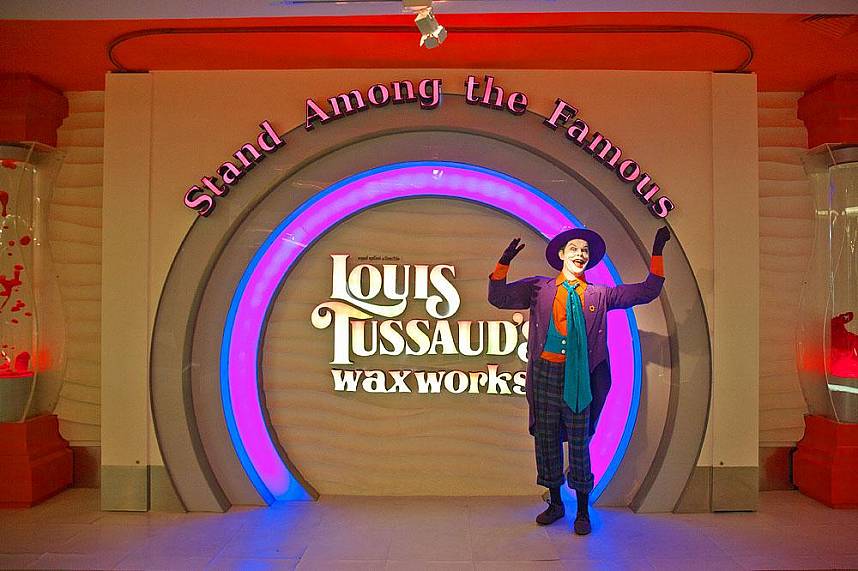

His new museum, Ebenstein argues, “would make available to the general public the rare and valuable cultural artefacts previously secreted in the Medici Wunderkammern, or cabinets of wonder”. Leopold II founded La Specola after becoming the Grand Duke of Tuscany in 1765 he aimed to educate Florentines in the empirical observation of natural laws and challenge the more irrational practices of the Roman Catholic church. “My background is intellectual history, so when I look at an object that looks strange to us today, my first thought is ‘Why? Did it look strange to people at the time? What does it say about us that it now looks strange?’” (Credit: Josephinum, Collections and History of Medicine, MedUni Vienna/Photo Joanna Ebenstein)Įbenstein realised that the Venus was not an oddity: it was truly a product of its time. “I went to other kinds of museums and churches to try and understand the context of the culture that created it, which made me start thinking about it in a very different way from most people in the medical museum world,” she says. Of all the forms an anatomical teaching tool could take, how come it was that one?” She overcame her initial reaction by reading about the Venus and looking at figures in different settings.
#WAXWORKS FIGURES COLLECTION HOW TO#
“I was trying to figure out how to make sense of it – it looks so bizarre to us now. “It’s so confusing, and it has such power when you see it, it’s hard not to be drawn in,” she tells BBC Culture. (Credit: Université de Montpellier anatomical collection/Photo Marc Dantan/Courtesy of Thames & Hudson Ltd)Įbenstein had to wrestle with her own feelings when she first encountered the Venus. “How can we understand today an object that is at once a seductive representation of ideal female beauty and an explicit demonstration of the inner workings of the body? How can we make sense of an artefact that was once equally at home in the fairground and the medical museum?” This life-size 40-piece anatomical Venus is from Pierre Spitzner’s 19th-Century collection. In the 21st Century, they also confound, flickering on the edges of medicine and myth, votive and vernacular, fetish and fine art,” she writes in her opening chapter. “Since their creation in late-18th-Century Florence, these wax women have seduced, intrigued, and instructed.


Ebenstein aims to place them in their cultural context, looking at the history of the anatomical Venus and finding out where it fits in the 21st Century. These are waxworks that both intrigue and repulse: models that seem to hover somewhere between freak show and operating theatre. No grinning faces to be photographed in selfies no celebrity glamour or statesmanlike poses. “One idly toys with a plait of real golden human hair another clutches at the plush, moth-eaten satin cushions of her case as her torso erupts in a spontaneous, bloodless auto-dissection another is crowned with a golden tiara, while one further wears a silk ribbon tied in a bow around a dangling entrail.” (Credit: Museo di Storia Naturale Università di Firenze, Zoologica, ‘La Specola’, Italy/Photo Joanna Ebenstein) “Supine in their glass boxes, they beckon with a gentle smile or an ecstatic downcast gaze,” writes Ebenstein in The Anatomical Venus. She spawned numerous copies, referred to as Slashed Beauties or Dissected Graces and also displayed in medical museums. Also known as ‘the Medici Venus’, the life-size wax figure has real human hair, and can be dissected into seven anatomically correct layers. (Credit: Josephinum, Collections and History of Medicine, MedUni Vienna/Photo Joanna Ebenstein)Ĭreated between 17, the original anatomical Venus by Clemente Susini (pictured) can still be seen at La Specola – the public science museum founded by Leopold II in Florence. This Anatomical Venus, produced by the workshop at La Specola in Florence between 17, is displayed in her original rosewood and Venetian glass case at the Josephinum, Vienna, Austria. Her book () reveals how a figure that provokes an uneasy reaction in viewers now was once a popular tool for instruction. “They do say something different to us today from what they meant at the time,” says Joanna Ebenstein, co-founder of () in New York. Yet to do so is to misunderstand them, says the author of a new book. Our natural reaction is to recoil with disgust, to dismiss these eerie waxworks as freak show objects. A tiny foetus, its foot kicking out of a womb an intestine piled up next to a lifeless figure, her torso ripped open from the string of pearls on her neck to her abdomen.


 0 kommentar(er)
0 kommentar(er)
